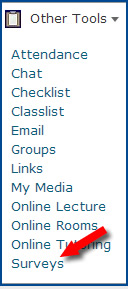Module Six: Activities
Reading between the Lines: Making Inferences in Content Reading
Activity 1 — "Mining" a text for ideas – Strategy 1 or 2
Step 1: Read the instructor’s Introduction to the module.
Step 2: Complete the required readings.
- Inferential Reading Comprehension Considerations Packet (PDF)
This packet includes a discussion of the meaning of the term inferential comprehension, the consideration of specific sub-skills necessary for making inferences, suggestions for ways to teach students to make inferences, and ideas designed to provide a variety of opportunities for students to practice the skill of inferential comprehension. - Billmeyer, R. (2006). Strategies to Engage the Mind of the Learner, 2nd ed.
- Section 3 p.91 - Proposition/Support Outlines
- P. 103 - Save the Last word for Me
- P. 122 - Thinking from Different Perspectives
Step 3: Choose Strategy 1 or 2 — “Mining” a Test for Ideas
Select one of the strategies, design an action plan, review the action plan “live” via Google Hangouts, Skype or face-to-face with a peer educator in your district, then write a reflection.
Here are two strategies for successfully training readers in making an inference. Both highlight the importance of using actual text to anchor an inference a student is making.

Develop an Action Plan for one of the two strategies. Print the Strategy Action Plan Checklist that describes each component required in the Action Plan.
Example 1 — Kindergarten
Example 2 — High School Personal Finance
![]() Choose one strategy for your Action Plan.
Choose one strategy for your Action Plan.
Strategy 1 — Cartoon Cloud Boxes
Step 1: Text Selection
Select a short, high interest, inference-rich passage or a page from your classroom's textbook or other online source and make classroom copies for all students.
Step 2: Add Blank Cartoon Cloud Boxes
Leave room around the borders of the text for a series of blank cartoon cloud boxes. Surround the text with cloud boxes. Use these cloud boxes like those used in comic books. Characters in comic books and cartoons have a bubble above their heads inside of which are the words they are saying or thinking. If it is a thought, the bubble is connected by a series of dots or small circles to the character’s head. If it is a direct quote, the box has an arrow pointing to the character speaking.
Click here for some speech and thought bubbles that you may use on your text analysis hand-outs.
Step 3: Discussion Posting
Discuss your Action Plan on the Discussion Board.
Step 4: Discussion Responses
Respond to two classmates' postings.
~ OR ~
Strategy 2 — T-Chart
Step 1: Select a Passage
Select an inference-rich passage from your text or other source.
Step 2: Create a T-Chart
Create a T-chart graphic . . .

. . . with the following headings:
- Reading Between the Lines, I See… — above the left side of the T crossbar.
- Words or phrases that gave me the idea — above the right side of the T crossbar.
Download this Word document of the T-chart. This is a Word doc. If it doesn't open on your screen, look for it in your Downloads folder.
Step 3: Action Plan Report
Now that you understand the strategy, complete your Action Plan (Word doc, please) that incorporates this strategy with specific content. Keep the Strategy Action Plan Checklist close by as you write. In your description / explanation of the Action Plan, include some of the information you would expect students to fill in the chart.
Step 4: Discussion Posting
Discuss your strategy on the Discussion Board. No formal paper is required.
Step 5: Discussion Responses
Respond to two classmates' postings.
Tips for Teaching Inference Skills
Study the following guidelines for inference strategy instruction. If you wish, combine any of these with your choice of strategy #1 or #2.
- Begin with a non-print context such as a clip from a video, poster or even better, a picture book.
- Use a short read aloud passage combined with a think aloud approach, and walk students through inferences that you are making as you read a text. Have students practice this in pairs with similar short passages.
- To discourage wild guessing and pure speculation, always insist that students refer to specific words or passages that act as triggers for an inference.
- Unusual sources for learning to inference are political cartoons, bumper stickers, magazine ads and billboards.
- Use sticky notes / Post-Its to link an inference to the print text.
Activity 2 — What I Want to Know/Learn List
In Module One you completed Step 1 of the KWL strategy and described your students' positive and negative literacy behaviors.
K = What do you Know
W = What do you Want to Know
L = What have you Learned
Now it's time to make a list based on the “L” portion, what you have learned, and the "W" portion, What you Want to Know or Want to Learn during the remainder of this course.
This could include questions about specific curriculum materials or instructional practices you want to know that relate to aspects of diversity that influence reading development of all students, including struggling learners and English language learners.
- Copy your list to the Discussion Board, titling it Want to Know/Learn, Your Last Name
- Respond to a minimum of one other participant's postings.
 Discussion Rubric
Discussion Rubric
Activity 3 — Midterm Feedback Survey
Please complete a midterm survey to provide feedback to your instructor about your experiences with the course so far. You will find the survey in Learn@UW-Stout under the Surveys link in the dropdown menu for Other Tools.

When you have completed your work for this module, please proceed to the next module.
